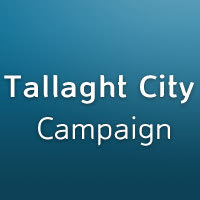About South Dublin County
South Dublin (Irish: Áth Cliath Theas) is an administrative county in the Dublin Region of the Republic of Ireland. The county seat is Tallaght, the largest suburb of Dublin and the biggest urban centre in the county. Other important centres of population are Lucan and Clondalkin. Much of the county is heavily urbanised but small rural settlements exist in the western parts of the county. South Dublin has a population of 246,935 according to the 2006 census. The heraldic crest for South Dublin reads reads "This We Hold In Trust" in both English and Irish, while incorporating elements relating to the history, geography and present day infrastructure of the area.
As part of the Dublin Region, South Dublin is within the geographic remit of the Dublin Regional Authority. Following the enactment of the Local Government Act 2001, the Regional Authority was established. It is one of eight such Authorities in the state. Local government in the region was further regulated by the Local Government Act 1994. This provided for the legal establishment of the following local government administrative areas:
*Dun Laoghaire-Rathdown
*Fingal
*South Dublin
and also recognised the extant Dublin Corporation area, vesting its powers in a renamed entity - Dublin City Council. The statutory instrument giving effect to the Act came into force on 1 January 1994. The instrument also provided for the abolition of Dublin County Council - the entity that had proviously had responsibility for Dun Laoghaire-Rathdown, Fingal and South Dublin. The four entities collectively comprise the former entity known as County Dublin. This entity, which had been created during the Norman invasion of Ireland, was abolished under the Acts.
South Dublin was based on an existing electoral division, Belgard (An Bealach Ard), whose boundaries were only finalized in 1993, to accommodate the M50 motorway, and then used when it was made an Administrative County in 1994 (Fingal and Dun Laoghaire-Rathdown's boundaries and names were both set in 1985). The name of Belgard did have a historical association with the area, being the designation of one of the border fortresses of the Pale that existed in that area. It was altered however due to a view that the name Belgard might create associations with areas of modern development in Tallaght that now also use that name. Various organs of state use alternative subdivisions of the Dublin region for administrative reasons, for example the postal codes.
South Dublin has an area of 222.74 square kilometres and begins 15 km south west of Dublin's centre. It is bounded by the Dublin Mountains to the south, the River Liffey to the north, Lucan and Palmerstown to the west, Tallaght to the south-west and the Dublin Mountains (the foothills of the Wicklow Mountains) to the south. South Dublin is bordered by the counties of Fingal, Dun Laoghaire-Rathdown, Kildare and Wicklow as well as by Dublin City Council, which in law has equal status to administrative counties.
Towns and villages
Most areas in south Dublin are also suburbs of Dublin city but some, such as Newcastle, Rathcoole and Saggart, are too remote for this.
The County Council designates status of towns, villages and suburbs in three tiers - town, district centre and local centre, and these are used in planning and management. In the 2004-2010 development plan, the towns and district centres are listed as:
* Tallaght (county seat)
* Clondalkin ("to be facilitated and developed as a Town Centre... including northward development")
* Lucan (with notes on the Liffey Valley Centre, and the developing Adamstown area - a future "district centre" - and a stated aim to avoid Lucan merging with Leixlip.
*and with a proposal to develop a Town Centre around the Liffey Valley Centre at Quarryvale
while the more local centres are noted in three groups:
*City suburbs including at least Rathfarnham, Palmerstown, Templeogue, Knocklyon and Greenhills
*Villages such as Rathcoole, Newcastle(-Lyons), and Saggart
*New neighbourhoods, some within bigger, older areas - including such as Kilnamanagh, Ballyowen, Finnstown, and, in development, Adamstown.[5]
Residential areas
Adamstown
Ballyboden
Ballyroan
Clondalkin
Edmondstown
Firhouse
Greenhills
Jobstown
Knocklyon
Lucan
Newcastle
Palmerstown
Rathcoole
Rathfarnham
Rockbrook
Ronanstown
Saggart
Tallaght
Templeogue
Source: http://en.wikipedia.org/wiki/South_Dublin
Read About South Dublin County in Spanish, German and French in the Links to South Dublin County on the side bar to the right.
Subscribe to:
Comments (Atom)

